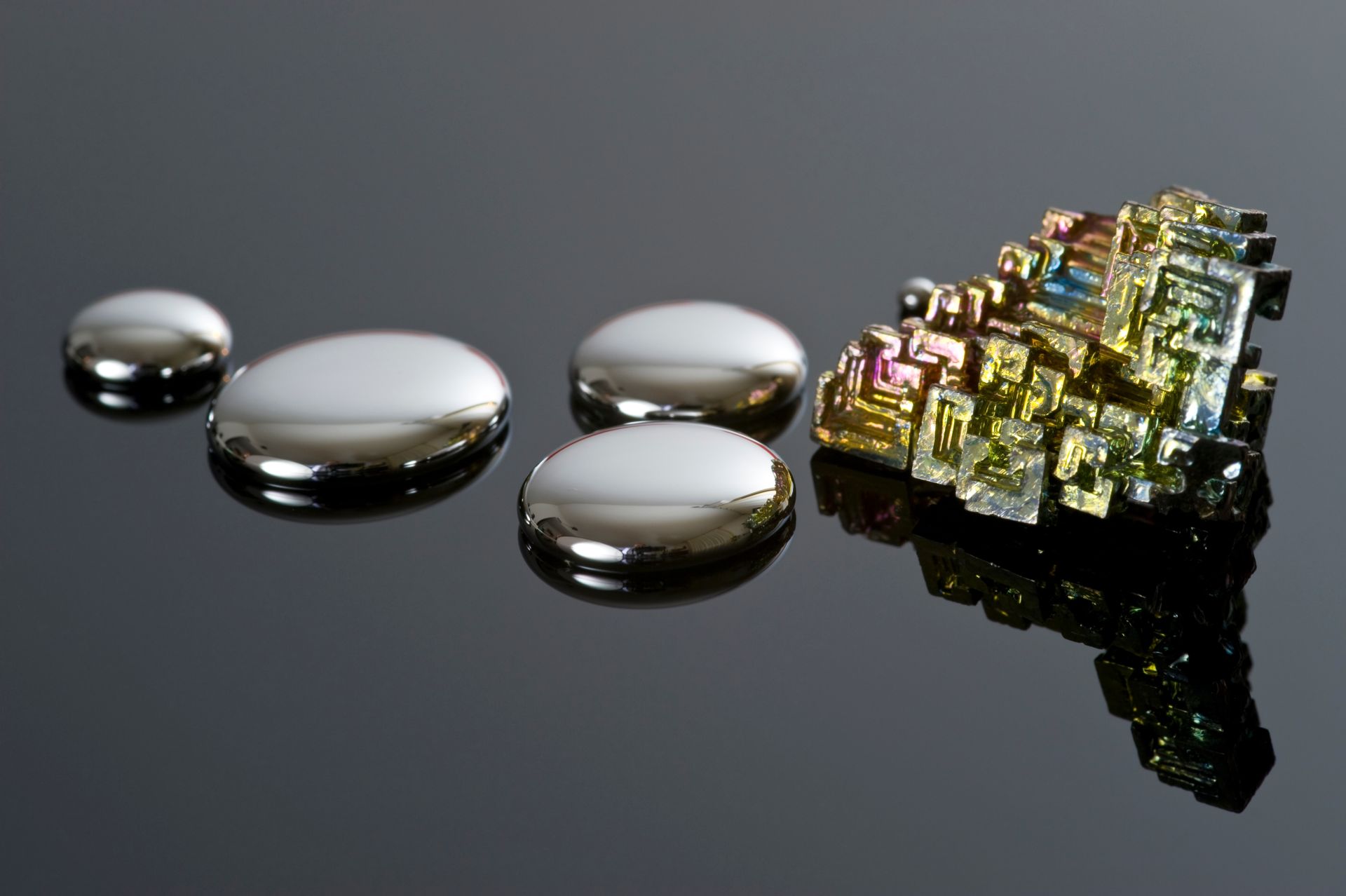Bismuth’s low melting point may have helped it find a niche in the printing and typesetting industries of the early 20th century, but it gained new life around the mid-20th century for its use in electronic devices. Due to its non-toxicity, it has become in high demand as a lead substitute in products such as fishing sinkers and bullets.
The need for safer and more durable alloys is nothing new to manufacturing, and bismuth-tin is an ideal example of this: the union of a low-toxicity heavy metal and a non-corrosive metal respectively. What industries are finding is that their materials can be further optimized as machining and production technology improves. Bismuth-based alloys need to be more malleable and ductile without sacrificing purity and reliability.
This alloy’s multiple benefits have led to its rapid commercial adoption and use as a carbide stabilizer and the production of fusible alloys. The driving force behind bismuth-tin’s success is that these other properties are possessed by both metals, giving the final alloy the best of each.
Key Properties of Bismuth-Tin
Bismuth itself is known widely for its iridescent appearance when in a crystal formation. It is often compared to lead, as both are used extensively as soldering agents, with the key difference being bismuth is non-toxic to handle. Pure bismuth’s electrical and thermal conductivity is unusually low for a metal, which makes it a very stable base for alloys. The dissolvability of bismuth at a low pH provides the option of removing it from bismuth-tin alloys for recovery or disposal of damaged areas.
Moreover, bismuth has exceptionally strong diamagnetic properties. As it is essentially repelled by a magnetic field, it will not become magnetized. This property has led to bismuth being leveraged in the technology and electronics industries, specifically in magnetic shielding applications.
Combined, bismuth-tin is resistant to electricity, heat transfer and corrosion while remaining non-toxic and safe to handle. Both tin and bismuth share low melting points, with some compositions boasting as low as a 117 F° (47 C°) melting temperature.
Applications of Bismuth-Tin
Several alloys with low melting points are used for solder, and bismuth-tin is no exception. As an eutectic alloy, bismuth-tin melts evenly as the involved metals are able to adjust in quantity to achieve a shared melting point. This consistent melting process is ideal for use in several safety devices such as:
- Fusible plugs: These plugs, possessing a low melting point, are able to respond to changes in temperature that exceed standard operating conditions. Once melted, they either allow pressure and heat to dissipate or, in the case of fire sprinklers, allow water to extinguish any flames caused by the heat.
- Thermal switches: The low thermal conductivity of bismuth-tin alloy can be advantageous in applications where the transfer of heat needs to be minimized. The alloy’s stability under repeated temperature cycling makes it very reliable for thermal switches.
While the alloy has found some use in jewelry and art applications for its malleability, production settings often use bismuth-tin to hold other metals as they’re machined. Scenarios that require precise machining, such as creating jet engine blades, require the stability that bismuth-tin provides.
Belmont Metals and Alloys
Given the role of protection bismuth-tin often has, it’s crucial to have the proper alloy composition for the job. From pure bismuth ingots to an array of bismuth-based alloys, Belmont Metals has the answer to your production needs. Contact us today to discuss your goals and find your ideal solution.

